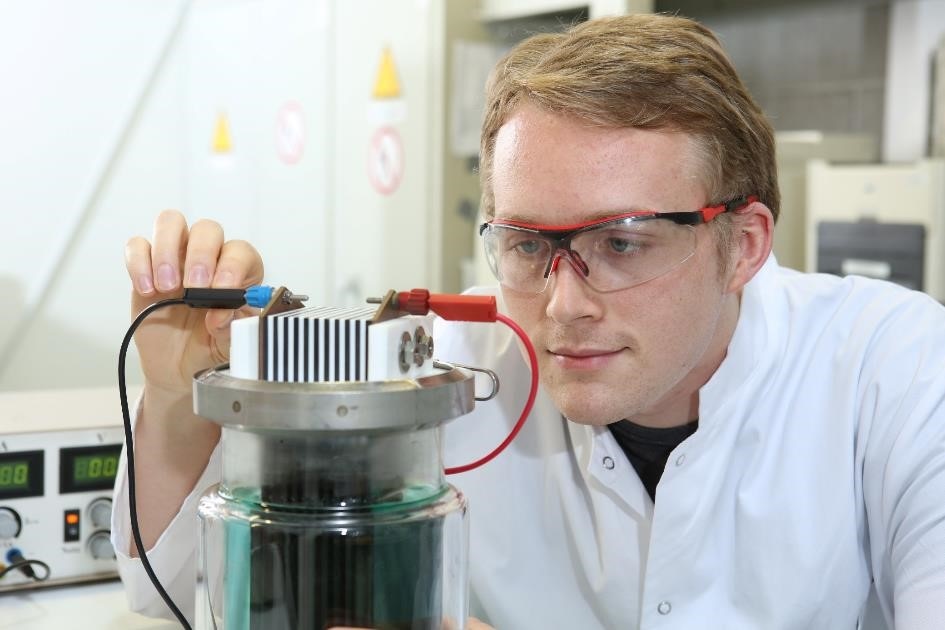Nov 20 2017
The field of electrochemistry has gone through a resurgence in the recent past, and at present, a number of research teams are analyzing the environment-friendly synthesis or transformation of molecules.
Yet, despite the advantageousness of electrochemistry, it is difficult to be applied to different molecules. For instance, only high-molecular-weight products such as polymers have been produced at the end of the electrolysis of extremely reactive substances. This production technique was at times applied deliberately, such as for producing polyaniline (or the so-called aniline black) and polythiophene. Currently, for the first time, chemists from the Johannes Gutenberg University Mainz (JGU) have propitiously avoided the formation of electrochemical polymer and have developed a sustainable and effective production approach for such significant products.
 A young researcher in Professor Waldvogel’s team working with the electrolysis equipment. CREDIT: Alexander Sell.
A young researcher in Professor Waldvogel’s team working with the electrolysis equipment. CREDIT: Alexander Sell.
For initiating chemical reactions, electrical current is applied in electrochemistry rather than partially dangerous chemical reagents, and thus with no wastage of reagent. This environment-friendly technique enables easy synthesis of numerous compounds that have high pharmaceutical, chemical, and material science prospects, for example, building blocks for co-catalysts during homogeneous catalysis. At present, the research team headed by Professor Siegfried Waldvogel at the Institute of Organic Chemistry at Mainz University has now come up with a technique to apply this important technology with extremely reactive substances.
Working with certain starting substances, electrochemistry always resulted in polymers. Now we can choose to bring together only two building blocks.
Professor Siegfried Waldvogel, The Institute of Organic Chemistry, Mainz University
The approach was created in partnership with Evonik Performance Materials GmbH.
Yet, the simple nature of this synthesis and also its environmentally-friendly nature look propitious. Hydrogen is the only “waste” from this technique, which is an environment-friendly fuel. Here, the factor crucial for achieving success is the application of a distinctive electrolyte system that is exceptionally stable and can be used again after the electrolysis, reiterating the environmentally-friendly feature of this technique. Moreover, the amazing electrolyte is the reason behind the high selectivity of the reactions. Hence, an uncomplicated electrolysis system can be adopted.
Put differently, for the first time, the researchers were successful in performing an electrochemical carbon-carbon cross-coupling of thiophenes with phenols. In a different experiment, they performed oxidative cross-coupling of aniline derivatives, selectively synthesizing a wide array of biphenyl diamines. The papers were published in the Angewandte Chemie journal.